Premium Only Content

The Tapes the Supreme Court Did Not Want You to Hear: The Most Significant Oral Arguments (1993)
The Tapes the Supreme Court Did Not Want You to Hear: The Most Significant Oral Arguments (1993)
The Subversive Activities Control Board (SACB) was a United States government committee to investigate Communist infiltration of American society during the 1950s Red Scare.[1] It was the subject of a landmark United States Supreme Court decision of the Warren Court, Communist Party v. Subversive Activities Control Board, 351 U.S. 115 (1956), that would lead to later decisions that rendered the Board powerless.[2]
It was organized on November 1, 1950, under authority provided in the McCarran Internal Security Act.[3] The original 5 members of the panel were Seth W. Richardson of Washington, D.C., the Board's Chairman,[4] along with Peter Campbell Brown of New York, Charles M. LaFollette of Indiana, David J. Coddaire of Massachusetts, and Dr. Kathryn McHale of Indiana.[5] Mr. Brown later served as Chairman in 1952 and 1953.
The SACB was empowered to order the registration of organizations that it found to be "Communist fronts", "Communist action" groups or "Communist infiltrated" groups:[6]
(e) It shall be the duty of the Board-
(1) upon application made by the Attorney General under section 13(a) of this title, or by any organization under section 13(b) of this title, to determine whether any organization is a Communist-action organization within the meaning of paragraph (3) of section 3 of this title, or a Communist-front organization within the meaning of paragraph (4) of section 3 of this title; and
(2) upon application made by the Attorney General under section 13(a) of this title, or by any individual under section 13(b) of this title, to determine whether any individual is a member of any Communist-action organization registered, or by final order of the Board required to be registered, under section 7(a) of this title.
In carrying out this mandate, the SACB was a leader in the U.S. government's response to the Red Scare. The SACB's proceedings were thorough and methodical. Hundreds of witnesses testified and were cross-examined by defense lawyers. The decisions and findings of the SACB were subject to judicial review.
In 1955, President Dwight D. Eisenhower appointed former Arkansas Governor Francis Cherry as SACB director. The appointment was continued by Presidents John F. Kennedy and Lyndon B. Johnson. However, , the 1965 U.S. Supreme Court Albertson v. Subversive Activities Control Board case eliminated the SACB's authority to enforce Communist registration requirements.
The Subversive Activities Control Board would be officially abolished by Congress in 1972.[7]
https://en.wikipedia.org/wiki/Subvers...
The Supreme Court of the United States (SCOTUS) is the highest court in the federal judiciary of the United States. It has ultimate appellate jurisdiction over all U.S. federal court cases, as well as over state court cases that involve a point of federal law. It also has original jurisdiction over a narrow range of cases, specifically "all Cases affecting Ambassadors, other public Ministers and Consuls, and those in which a State shall be Party."[2] The court holds the power of judicial review, the ability to invalidate a statute for violating a provision of the Constitution. It is also able to strike down presidential directives for violating either the Constitution or statutory law.[3] However, it may act only within the context of a case in an area of law over which it has jurisdiction. The court may decide cases having political overtones but has ruled that it does not have power to decide non-justiciable political questions.
Established by Article Three of the United States Constitution, the composition and procedures of the Supreme Court were initially established by the 1st Congress through the Judiciary Act of 1789. As later set by the Judiciary Act of 1869, the court consists of the chief justice of the United States and eight associate justices. Each justice has lifetime tenure, meaning they remain on the court until they die, retire, resign, or are removed from office.[4] When a vacancy occurs, the president, with the advice and consent of the Senate, appoints a new justice. Each justice has a single vote in deciding the cases argued before the court. When in majority, the chief justice decides who writes the opinion of the court; otherwise, the most senior justice in the majority assigns the task of writing the opinion.
The court meets in the Supreme Court Building in Washington, D.C. Its law enforcement arm is the Supreme Court Police.
-
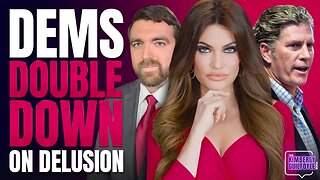 40:43
40:43
Kimberly Guilfoyle
3 hours agoDems Double Down on Delusion-Why? Live with Tony Kinnett & Bo French | Ep.202
28.3K8 -
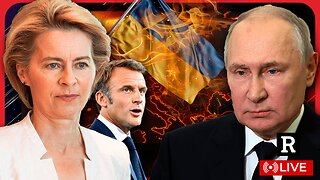 1:28:42
1:28:42
Redacted News
2 hours agoBREAKING! SOMETHING BIG IS HAPPENING IN EUROPE ALL OUT WAR IS COMING AGAINST RUSSIA, TRUMP FURIOUS
56K99 -
 47:50
47:50
Candace Show Podcast
2 hours agoBREAKING: Judge Makes Statement Regarding Taylor Swift's Text Messages. | Candace Ep 155
41.4K29 -
 56:42
56:42
VSiNLive
1 hour agoFollow the Money with Mitch Moss & Pauly Howard | Hour 1
5.54K -
 1:05:32
1:05:32
In The Litter Box w/ Jewels & Catturd
1 day agoShalom Hamas | In the Litter Box w/ Jewels & Catturd – Ep. 756 – 3/6/2025
60.2K13 -
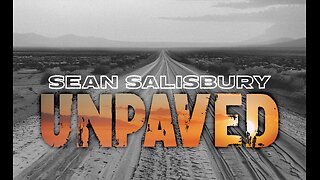 1:23:00
1:23:00
Sean Unpaved
3 hours ago $1.99 earnedNFL Free Agency
22.4K2 -
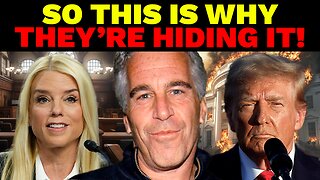 18:25
18:25
Stephen Gardner
2 hours ago🔥The REAL REASON the Epstein Files are being HIDDEN | I CONFRONT Alan Dershowitz for details!
33.6K62 -
 1:58:44
1:58:44
The Quartering
6 hours agoTrump To Charge USAID Staff, Campus RIOT Erupts, Theo Von & Candace Owens, Ukraine Gets Worse!
81.8K39 -
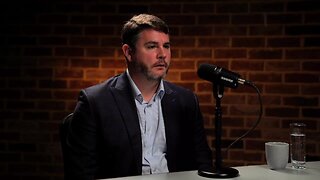 1:08:42
1:08:42
Winston Marshall
5 hours ago“This Is a Ticking Timebomb!” Trump’s Unlikely Coalition & The Woke Right w/James Lindsay
38.5K7 -
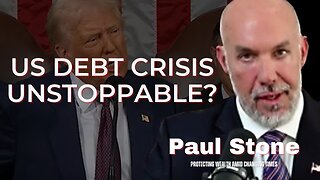 24:32
24:32
Rethinking the Dollar
5 hours agoWhy Washington Will NEVER Fix the Debt Crisis w/ Paul Stone
19.2K1